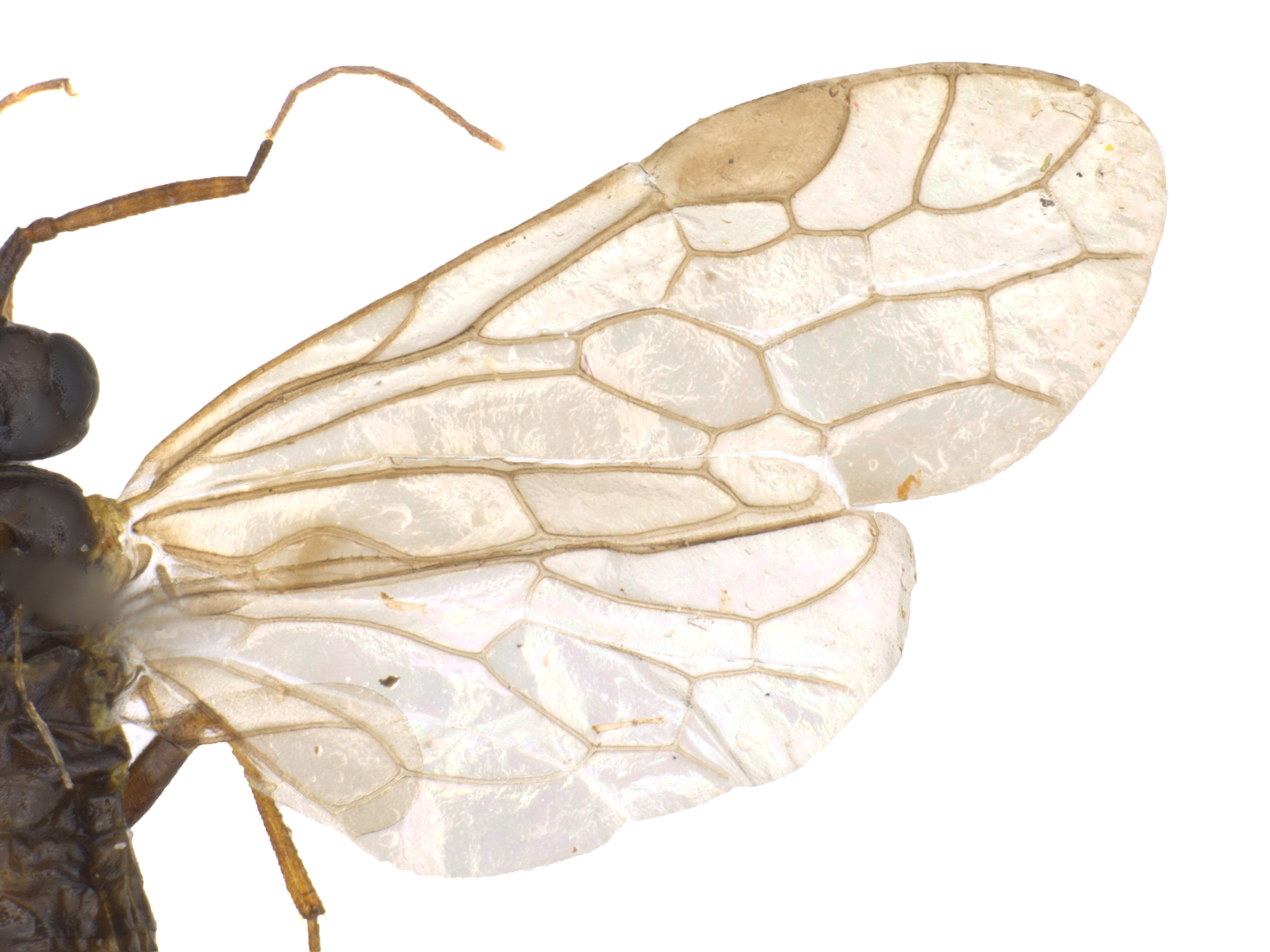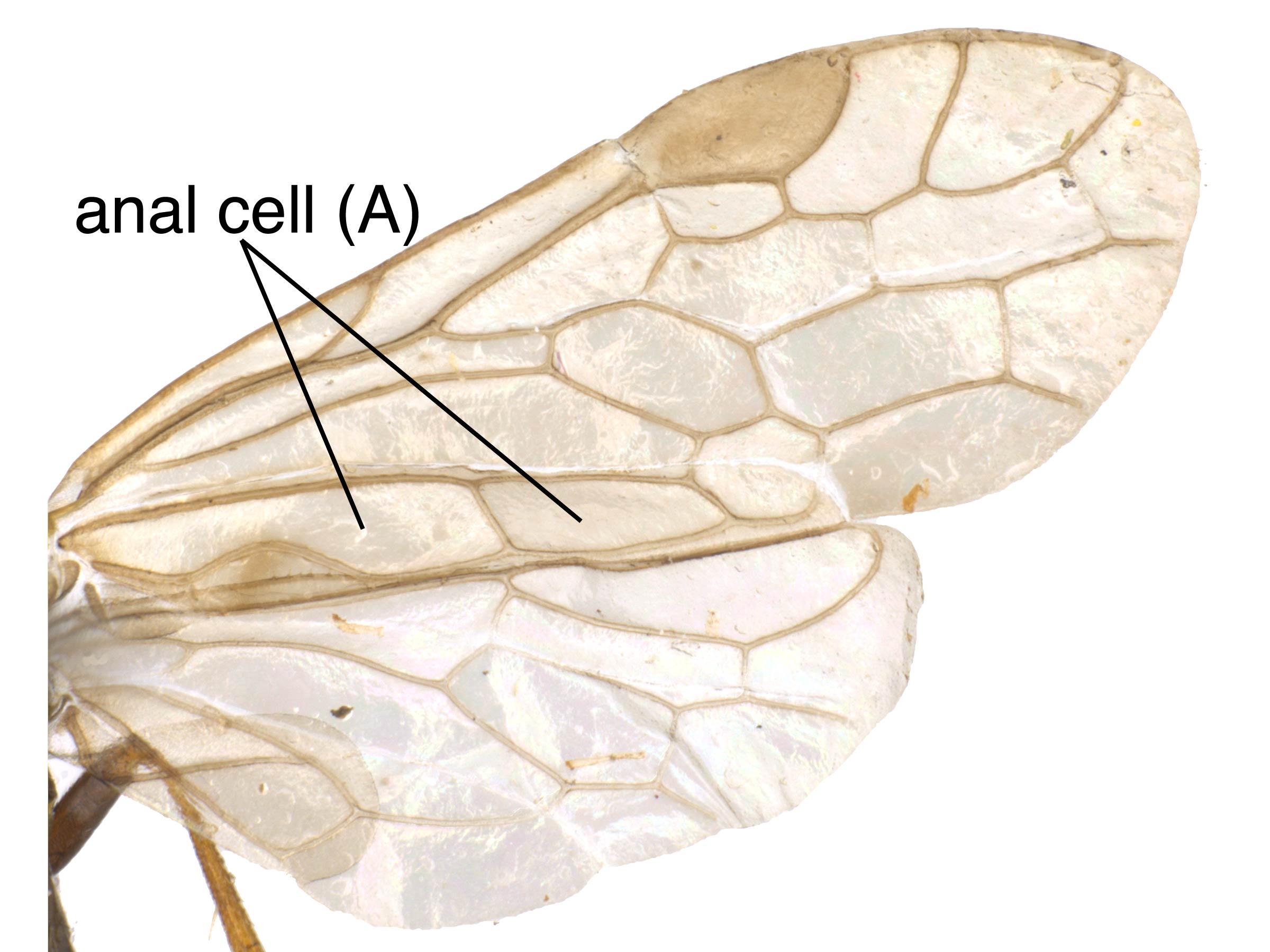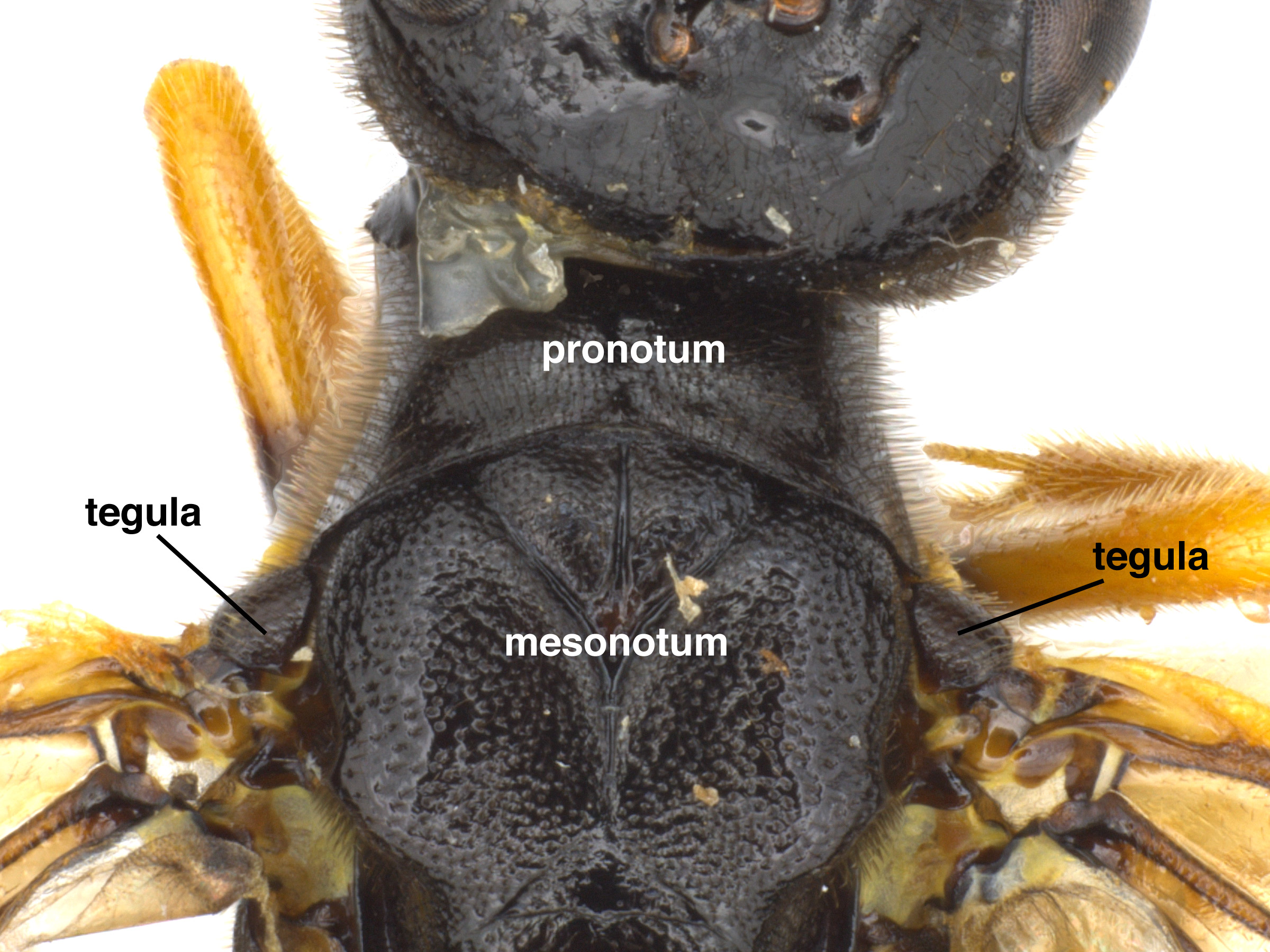Family: Tenthredinidae
Family common name: common sawflies
Subfamily: Heterarthrinae
Tribe: Fenusini
Genus: Setabara Ross, 1951
Subgenera: none
The Tenthredinidae are the most species-rich family and are found throughout the world, in all continents but Antarctica. They are known as the “common sawflies.” They can generally be recognized by a cylindrical body and long, segmented antennaeantenna:
the sensory organ emerging from the front of the head, usually between the compound eyes and above the clypeus; includes the flagellum, scape and pedicel
 . Otherwise, they come in a variety of colors, sizes, and forms (Goulet 1992Goulet 1992:
. Otherwise, they come in a variety of colors, sizes, and forms (Goulet 1992Goulet 1992:
Goulet H. 1992. The genera and subgenera of the sawflies of Canada and Alaska: Hymenoptera. Symphyta. The insects and arachnids of Canada. Part 20. Agriculture Canada Publication.).
Sawflies in the Heterarthrinae subfamily are generally small and dark-colored. Many species of this family are economic pests of trees and shrubs and can be characterized by their skeletonizing or leaf-mining larval feeding behaviors. Heterarthrinae adults can be distinguished from those of other subfamilies by wing venationvenation:
the network of veins on a wing
(Smith 1971aSmith 1971a:
Smith DR. 1971a. Nearctic Sawflies. III. Heterarthrinae: Adults and larvae (Hymenoptera: Tenthredinidae). Technical Bulletin, U.S. Department of Agriculture 1420: 1-84.).
Setabara is an uncommon genus that is monotypicmonotypic:
describes having only one representative; ex. a genus that includes only one species
in North America. Setabara histrionica is uncommonly collected and very small, about 3–4 mm in length. The species is completely black with hyalinehyaline:
transparent; glassy
 wings (Wei and Niu 2014Wei and Niu 2014:
wings (Wei and Niu 2014Wei and Niu 2014:
Wei M and Niu G. 2014. Setabara Ross, a genus new to China with description of a new species (Hymenoptera: Tenthredinidae). Entomological News 124 (2): 98-102.).
There are three described species worldwide. One occurs in North America (Taeger et al. 2010Taeger et al. 2010:
Taeger A, Blank SM, and Liston AD. 2010. World Catalog of Symphyta (Hymenoptera). Zootaxa 2580: 1-1064.).
Subfamily characters
 M slightly constricted at apexapex:
M slightly constricted at apexapex: vein 2r present (Goulet 1992Goulet 1992:
vein 2r present (Goulet 1992Goulet 1992:Genus characters
 longer than wide (Smith 1971aSmith 1971a:
longer than wide (Smith 1971aSmith 1971a: veins 2A and 3A incomplete and curved upwards (Smith 1971aSmith 1971a:
veins 2A and 3A incomplete and curved upwards (Smith 1971aSmith 1971a: cellcell:
cellcell: R1 closed, not open to margin (Smith 1971aSmith 1971a:
R1 closed, not open to margin (Smith 1971aSmith 1971a: anal cellanal cell:
anal cellanal cell: present (Smith 1971aSmith 1971a:
present (Smith 1971aSmith 1971a: with small basalbasal:
with small basalbasal: simple (Smith 1971aSmith 1971a:
simple (Smith 1971aSmith 1971a:The genus appears similar to the many small, black genera of Heterarthrinae. Setabara histrionica can be distinguished by the black tegulaetegula:
a thin, plate-like structure emerging from the base of the fore wing
 , closed radial cellcell:
, closed radial cellcell:
1. a membranous area of the wing between veins, 2. a small cavity or closed space
 of the hind winghind wing:
of the hind winghind wing:
the posterior wing of each pair of wings
 , and the small, inconspicuous lobe at the basebase:
, and the small, inconspicuous lobe at the basebase:
the beginning or most proximal area of any structure
of the tarsal clawtarsal claw:
sharpened appendage emerging from the apex of the tarsus
 (Goulet 1992Goulet 1992:
(Goulet 1992Goulet 1992:
Goulet H. 1992. The genera and subgenera of the sawflies of Canada and Alaska: Hymenoptera. Symphyta. The insects and arachnids of Canada. Part 20. Agriculture Canada Publication.).
none
Setabara histrionica adults have been collected from Prunus spp. (cherry, plum) (Smith 1971aSmith 1971a:
Smith DR. 1971a. Nearctic Sawflies. III. Heterarthrinae: Adults and larvae (Hymenoptera: Tenthredinidae). Technical Bulletin, U.S. Department of Agriculture 1420: 1-84.), and reared from Prunus emarginata.
unknown
World: The three species are North American, Indian, and Chinese, respectively (Taeger et al. 2018Taeger et al. 2018:
Taeger A, Liston AD, Prous M, Groll EK, Gehroldt T, and Blank SM. 2018. ECatSymmdash;Electronic World Catalog of Symphyta (Insecta, Hymenoptera). Program version 5.0 (19 Dec 2018), data version 40 (23 Sep 2018). Senckenberg Deutsches Entomologisches Institut (SDEI), Muuml;ncheberg. https://sdei.de/ecatsym/ Accessed: 28 Jan 2020.). Setabara clypeiambus occurs in Arunachal Pradesh, India (Saini and Ahmad 2013Saini and Ahmad 2013:
Saini MS and Ahmad M. 2013. First report of Profenusa Macgillivray amp; Setabara Ross with one new species of each genus from India (Hymenoptera: Symphyta: Tenthredinidae). Annals of Entomology 31(1): 15-20.), and S. sinica occurs in Zhejiang, China (Wei and Niu 2014Wei and Niu 2014:
Wei M and Niu G. 2014. Setabara Ross, a genus new to China with description of a new species (Hymenoptera: Tenthredinidae). Entomological News 124 (2): 98-102.).
North America: Setabara histrionica occurs in the western United States, with records from California, Colorado, Nevada, Oregon, and Washington (Smith 1971aSmith 1971a:
Smith DR. 1971a. Nearctic Sawflies. III. Heterarthrinae: Adults and larvae (Hymenoptera: Tenthredinidae). Technical Bulletin, U.S. Department of Agriculture 1420: 1-84.).
Map data from: GBIF.org (29 October 2019) GBIF Occurrence Download Setabara and the Smithsonian National Museum of Natural History Entomology Collection (USNM)
Details about data used for maps can be found here.